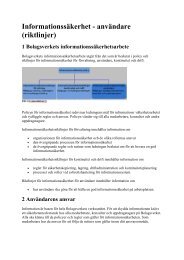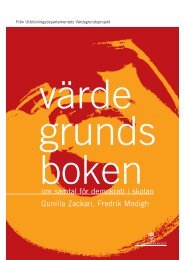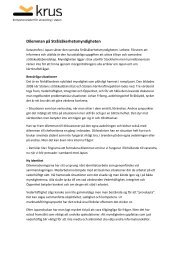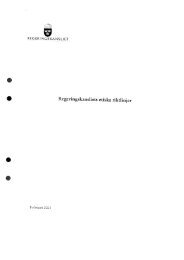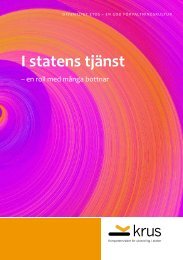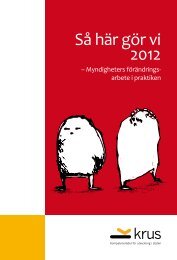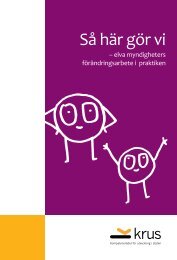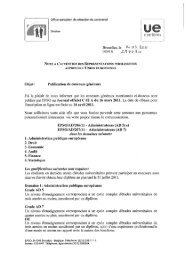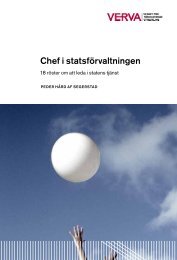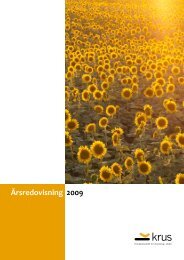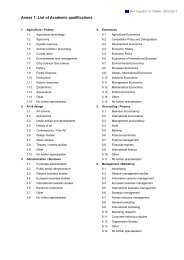Dialogkompetens i skolans vardag - Publikationer - LTU - Luleå ...
Dialogkompetens i skolans vardag - Publikationer - LTU - Luleå ...
Dialogkompetens i skolans vardag - Publikationer - LTU - Luleå ...
You also want an ePaper? Increase the reach of your titles
YUMPU automatically turns print PDFs into web optimized ePapers that Google loves.
16 A.-C. Wennergren<br />
The fact that seven to eight is the average number of pupils per class should<br />
make it easier to establish closer relationships between classmates and with<br />
teachers.<br />
Comments<br />
The feeling of being comfortable as a result of a pleasant physical<br />
environment is not unique to pupils with a hearing loss. But the absence of<br />
a comfortable feeling might have more significant consequences for concentration,<br />
since greater effort is required to concentrate when one sensory<br />
faculty, in this case hearing, is reduced. Substantial amounts of energy are<br />
also needed for visual concentration, not only lip-reading, but also searching<br />
for eye-contact with the people speaking round the table (Arlinger 1999,<br />
Gullacksen 2002).<br />
Concluding Remarks<br />
The point of departure for this study was the desire to convey pupils’<br />
explanations and to gain an understanding of their awareness of coping with<br />
a hearing loss and being able to participate in dialogues in school. Pupils’<br />
pictures and explanations have been seen as verbalised knowledge and<br />
experiences (Alerby 2004) as a part of their listening strategies. Within the<br />
same group it was possible to both find pupils who had multiple and often<br />
well grounded explanations, as well as those who provided a single sentence<br />
containing no explanation for their view. The different numbers and levels of<br />
explanations can be seen as a sign of a lack of open and regular discussions<br />
about environment related differences in relation to participation in<br />
dialogues. From a socio-cultural perspective (Säljö 2000, Wertsch 1998)<br />
humans are seen as mediating resources. In this case the resources related to<br />
having a hearing loss are to be found within the group of pupils themselves. In<br />
accordance with the Swedish National Curriculum (National Agency of<br />
Education 1994), there are ambitions to view pupils as resources, although<br />
the traditional approach has been to see the teachers as the person having<br />
most of the resources.<br />
Not every pupil in this study has a verbalised awareness of her/his hearing<br />
loss, but in each group and among all ages there were pupils who had a clear<br />
understanding of her/his best listening environment. This means that, as a<br />
community, they have an accumulation of experiences and knowledge to be<br />
shared. A school situation where listening strategies are neither verbalised nor<br />
communicated by the individual is far from having shared knowledge within a<br />
community of practice. To select and use the best listening environment when<br />
working in a group of four is not a question that concerns the needs of one<br />
individual, but of four. For the individual, there will always be something<br />
more to learn about than simply how to cope with the hearing loss (Lazarus<br />
& Folkman 1991).<br />
From an educational perspective, it is of interest to obtain knowledge<br />
about whether and in which circumstances pupils use additional technical



